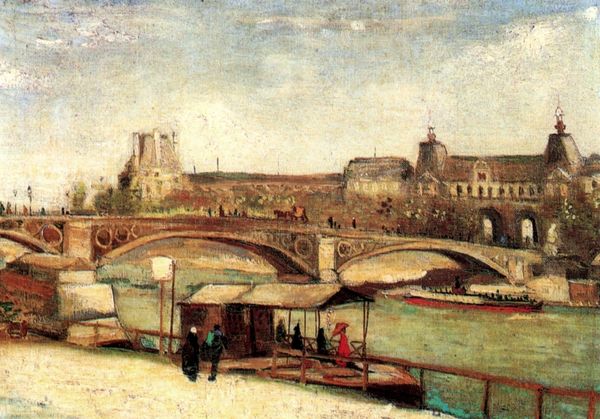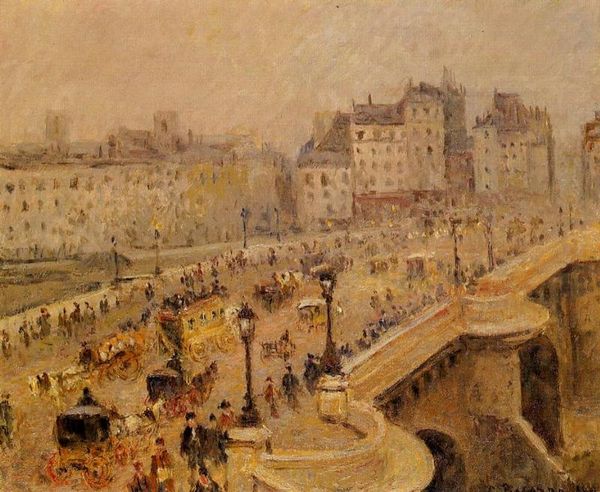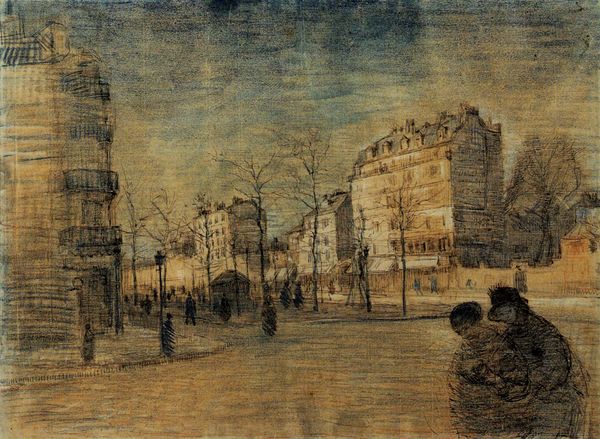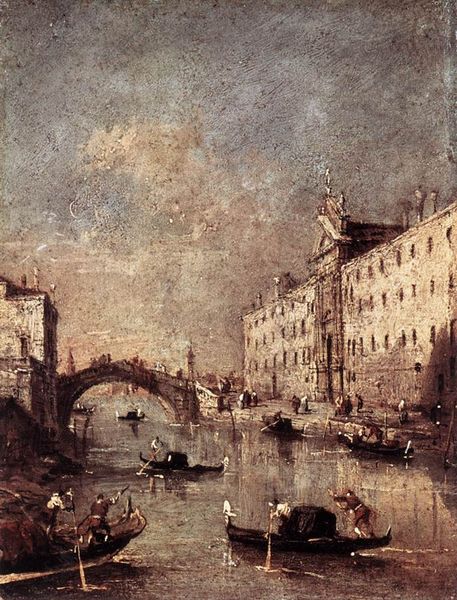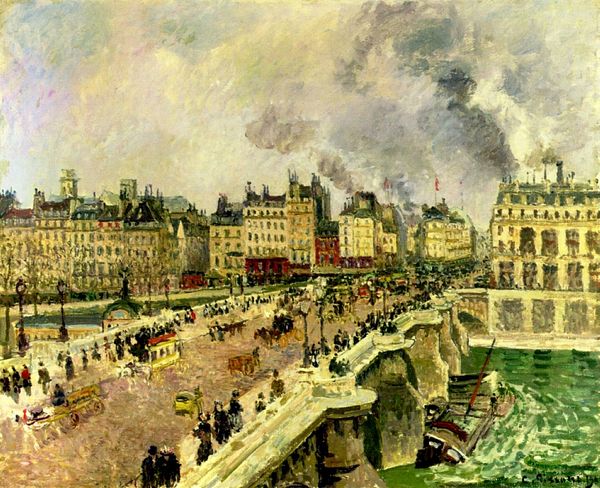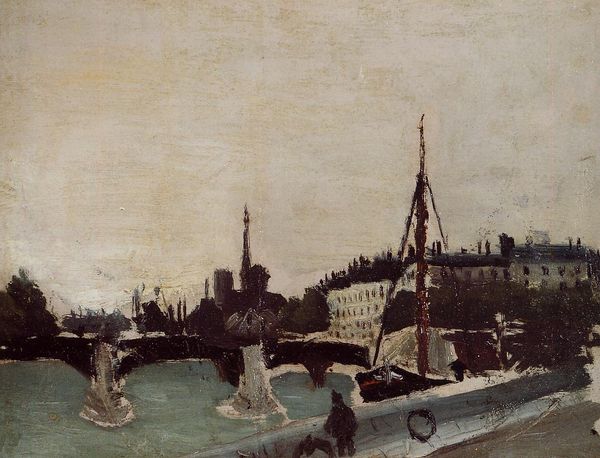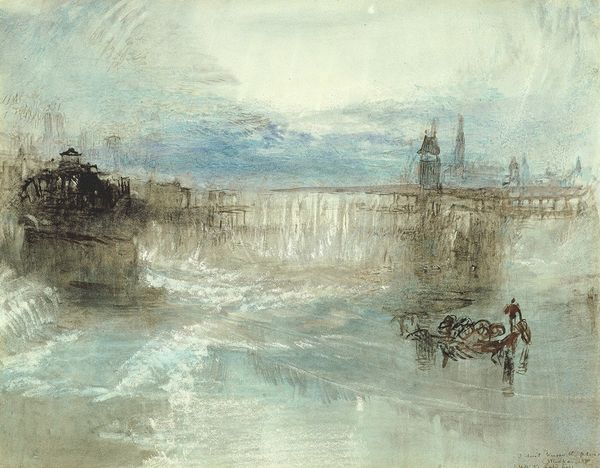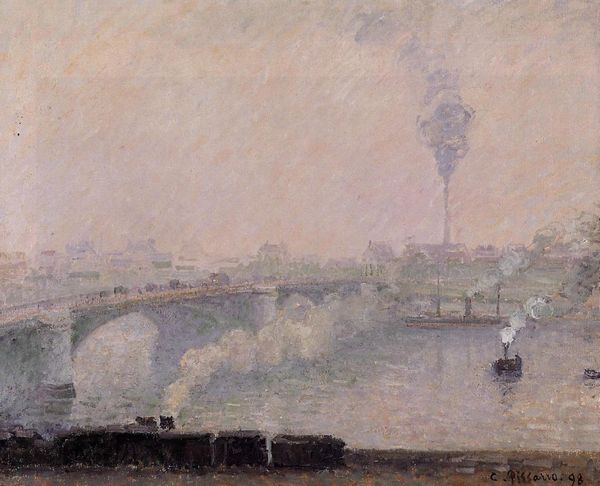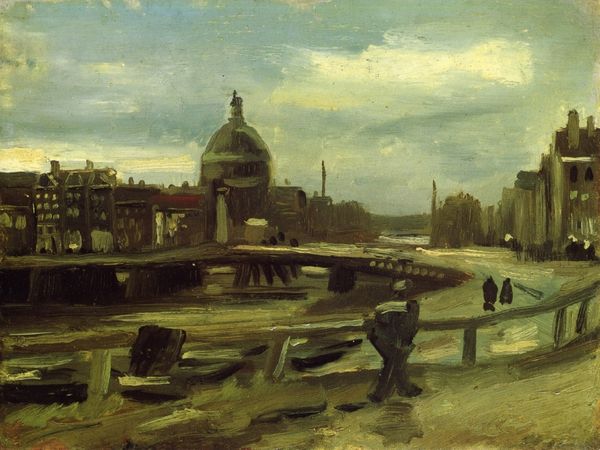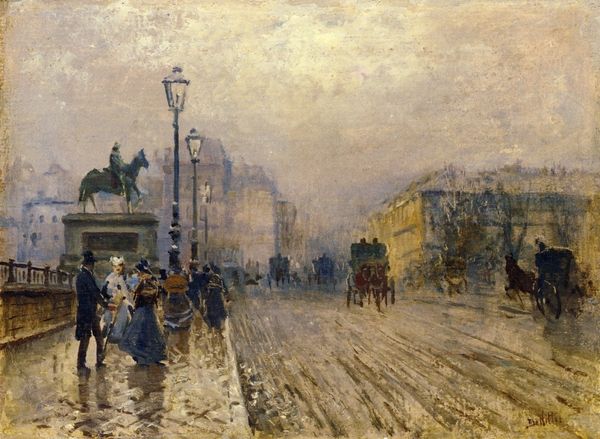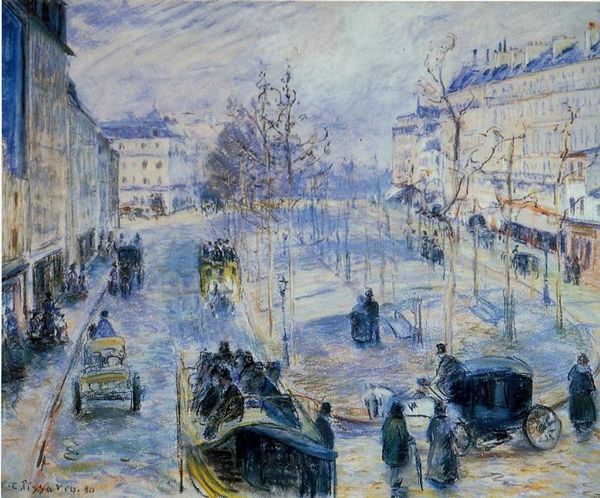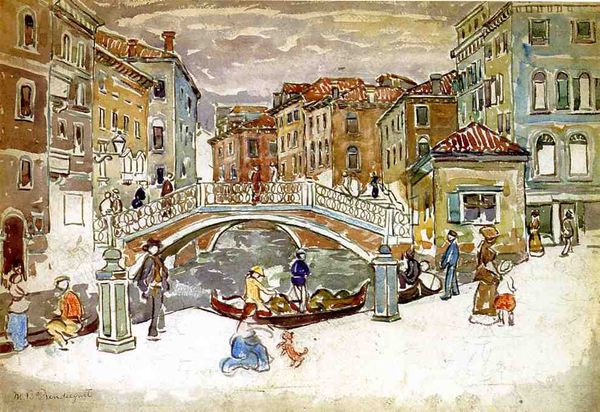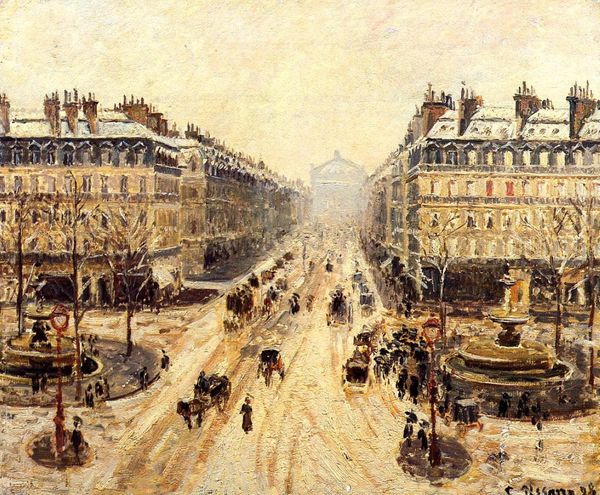
Copyright: Public domain
Editor: Glackens’s "La Villette," painted in 1895 using oil on canvas, captures a bustling cityscape beneath a prominent bridge. The overall atmosphere feels melancholic, almost dreamlike, blurring the lines between reality and memory. How do you interpret the societal context of this particular view? Curator: This piece resonates with the anxieties of rapid urbanization and industrialization that defined late 19th-century Paris. The bridge, rather than connecting, seems to loom, overshadowing the figures below. Consider how the elevated perspective subtly hints at social stratification, observing from above, whilst simultaneously depicting a population caught within structural forces. Editor: That's a great point, the way he uses the bridge really sets the tone. I was also wondering, does Glackens's impressionistic style contribute to or perhaps challenge the power structures you mentioned? Curator: It's both. The impressionistic blurring softens harsh realities, making them palatable for bourgeois consumption. However, it can also reveal the fleeting nature of modern life and the alienation it fosters. How might the indistinct figures suggest a commentary on individuality within the industrialized crowd? Editor: It's like everyone is just part of a larger machine, the features of the subjects seem like they aren't supposed to matter, just shapes moving to fill spaces in a greater urban structure. I see the artist using that machine, with paints, brush, canvas and technique, to question that same machinery within urban life. It seems Glackens is less interested in glorifying progress than in capturing its discontents. Curator: Precisely. And by engaging with these layers of meaning, we recognize that art never exists in a vacuum, it is always in conversation with its world. Editor: Thanks for expanding my perception. This painting reflects a world in flux and my perception of this artwork certainly developed by analyzing its context. Curator: Indeed. Analyzing art through multiple perspectives is how we can reveal our past and begin understanding the present.
Comments
No comments
Be the first to comment and join the conversation on the ultimate creative platform.
